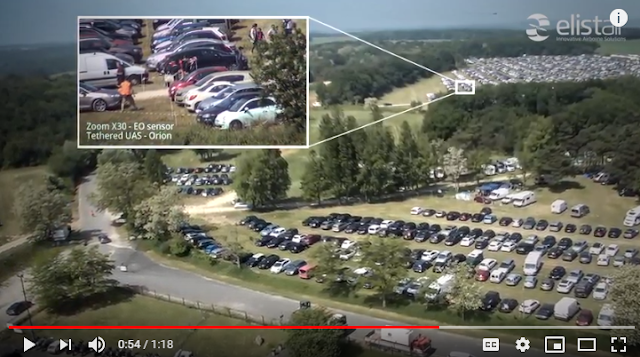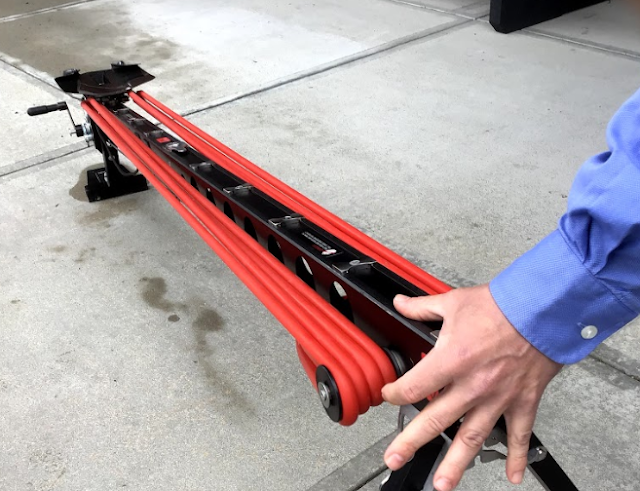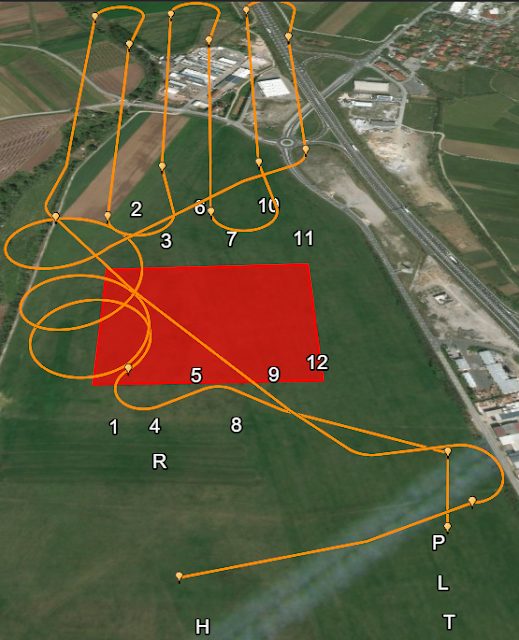This weekend, I was given an opportunity to fly a DJI Phantom 4 PRO Version 2.0 and its accessories shown in Figure 1. To better prepare for future missions using this system, I plan to spend time reviewing the pref-light checklists, the operating procedures, and the flight system's characteristics. Shown below is a table of contents emphasizing the UAS system, and my mission planning process for the first flight.
Table of Contents
Part 1----------------------------------------------------------------------------------------------------Phantom 4 V2 Overview
Part 2----------------------------------------------------------------------------------------------------Location Considerations
Part 3----------------------------------------------------------------------------------------------------Weather Considerations
Part 4----------------------------------------------------------------------------------------------------Office Checklist
Part 5----------------------------------------------------------------------------------------------------On the Field Preflight Checklist
Part 6----------------------------------------------------------------------------------------------------UAS Mission
Part 1: Phantom 4 Pro V2 Overview
The Dà-Jiāng Innovations (DJI) Phantom 4 PRO V2.0 is a relatively versatile UAV that can be used for amateur, commercial, and hobbyist use. Shown in Figure 1 is the assembled version of the UAV, its gimbal, and its 20 megapixel camera attached. Similar to other DJI products, flight time for this system is "approximately 30 minutes" when referring to its specs. Although it's possible that the UAV could last in the sky 30 minutes, the mission parameters, its payload, and weather conditions can greatly reduce the advertised time.
Perhaps surprising to some, this system is no longer being produced by DJI .This is surprising because the series was cancelled with very little warning, so if someone wanted to purchase the UAV or its accessories, they will have to now buy it from a non DJI vendor. Shown in Figure 2 is an inventory of important items that are within the borrowed transport case:
The Dà-Jiāng Innovations (DJI) Phantom 4 PRO V2.0 is a relatively versatile UAV that can be used for amateur, commercial, and hobbyist use. Shown in Figure 1 is the assembled version of the UAV, its gimbal, and its 20 megapixel camera attached. Similar to other DJI products, flight time for this system is "approximately 30 minutes" when referring to its specs. Although it's possible that the UAV could last in the sky 30 minutes, the mission parameters, its payload, and weather conditions can greatly reduce the advertised time.
 |
| Figure 1: DJI Phantom 4 Pro Version 2 |
- Camera Wipes and Lanyard
- Instructions for the UAS, Apple iPad, and iPad visor
- Transmitter
- UAV
- Memory card box, gimbal protector
- Propellers
- Batteries
- USB cables for the tablet and UAV
 |
| Figure 2: Opened UAS Transport Case |
Shown in Figure 3 is the location of my first mission with this system. By looking at the image, I was able to determine that there were not a lot of physical hazards aside from the trees surrounding the perimeters of the fields. Once I determined that this location has minimal physical hazards, I then refereed to Airmap.com to see what airspace hazards I might encounter.
 |
| Figure 3: Satellite Image of Local Park |
Shown in Figure 4 is the planned flight's location and its proximity to Saint Louis International Airport. Since the outer ring of the airspace is roughly 10 miles form where I wanted to fly, I did not need to consult the FAA LAANC system before the mission. Furthermore, I refereed to skyvector, and UAV Coach.com where I learned that this location was in Class G Uncontrolled Airspace. Despite being in uncontrolled airspace, it is extremely important to note that helicopters are known to fly in the area and that flight over pedestrians is not allowed.
 |
| Figure 4: Flight Location in Proximity to KSTL
Part 3: Weather Considerations
Although I had the entire day Sunday to use the UAS, the weather did not cooperate. The biggest factor that prevented me from flying was the wind. According to a custom checklist provided in the case, it was not recommended that I fly the UAV if the winds exceeded 25mph. At my first glance of the weather forecast, I looked at the image shown in Figure 5. Although the wind in Sunday's forecast was less than the wind threshold mentioned, this did not account for wind gusts. Furthermore, according to the UAVs specs, the maximum wind "resistance" is 10 m/s or approximately 22 miles per hour.
|
 |
| Figure 5: Google's Forecast |
Shown in Figure 6 is the METAR for Saint Louis International Airport. Although data collected from the METAR is roughly 10 miles away from the flight's location, wind gusts are 31 miles per hour which exceeds the recommenced practice of the checklist and the specs. As a result, I post-poned the flight to a later time. I then decided that I would attempt a flight around 6:30pm when the wind died down. However, civil twilight ended around 8pm which meant that I would have to operate from 7:00pm to 7:30pm to stay in line with FAA Part 107 regulations and by the time I set the system up, I determined that I was rushing myself and made the decision to cancel the mission so that I can go over everything more slowly.
 |
| Figure 6: Sunday METAR Conditions |
Part 4: Office Checklist
A few days later the weather conditions were much more favorable for flight. Below is a list of items I checked before I got to the field. This is sometimes known as the in office checklist. Although it mirrors the items listed in the overview, practicing an in office checklist will mitigate risk, help you perform a mission smoothly and ensure the longevity of your UAS.
Items that need to be charged:
A few days later the weather conditions were much more favorable for flight. Below is a list of items I checked before I got to the field. This is sometimes known as the in office checklist. Although it mirrors the items listed in the overview, practicing an in office checklist will mitigate risk, help you perform a mission smoothly and ensure the longevity of your UAS.
Items that need to be charged:
- UAV batteries
- Transmitter
- Inspect the antennas and ensure they are not damaged
- Ensure that all the buttons and control sticks are not damaged
- Tablet
- Mobile phone
Non Charged Items:
- Micro SD card wiped
- USB cables for transmitter
- Instruction manual
- Clipboard for paper checklist
- Lanyard
- Camera wipes
- Remote Pilot Certificate
- Clipboard with Checklist
Airframe
- Inspect motors for signs of damage
- Inspect sensors for signs of warping or cracks
- Inspect to see if it is uneven, loose or deformed
- Ensure that it is attached to the gymbal and not damaged in any way
- ensure that lense is clean
- Inspect for any signs of strain of damage
Note: In future missions involving autonomous operations, items that one should consider checking include
- Making sure mission application is up to date
- Making sure the mission is uploaded correctly
- Verifying mission parameters such as
- Height
- Speed of UAS
- Starring Point
- Ending Point
- Photo Overlap (for mapping missions)
- Battery life
- Estimated time it will take to complete UAS mission
Part 5: On the Field Preflight Checklist
As mentioned earlier, I was provided a checklist but I believe it is extremely important to make one that is more more inclusive to the operator and the mission type. In other words, do not be complaisant with the UAV provided checklist because the environment of your mission varies per operation and ones ability to understand the system varies by person. In the Pertinet Links section of this blog, I provided multi modal sources about how to use the Phantom UAS. After reviewing those sources and taking input from other users that have used the Phantom, I made my personal on the field checklist shown in Figure 7.
Part 6: UAS Mission
In the right hand corner of Figure 8 is the location I took off, and shown in the foreground of the photo is an island. Shown in Figure 9 is a snapshot an amphitheater at the same park. Shown in Figure 10 is a view of St Louis at 400 feet. If you click on that image and look closely, you will be able to see the arch in the background.
Demonstrated with photo evidence, I flew in different orientations while performing simple maneuvers. More importantly, I practiced flying smoothly and followed Part 107 rules. In addition, I practiced orbiting and flew the UAV to 400 feet. Nevertheless, there are more functions that I will explore. In future posts I will share my experiences using this UAS as a tool for preprogrammed photogrammetric missions and explain how UAS data is being used for engineering consulting.
As mentioned earlier, I was provided a checklist but I believe it is extremely important to make one that is more more inclusive to the operator and the mission type. In other words, do not be complaisant with the UAV provided checklist because the environment of your mission varies per operation and ones ability to understand the system varies by person. In the Pertinet Links section of this blog, I provided multi modal sources about how to use the Phantom UAS. After reviewing those sources and taking input from other users that have used the Phantom, I made my personal on the field checklist shown in Figure 7.
 |
| Figure 7: On the Field Checklist |
In the right hand corner of Figure 8 is the location I took off, and shown in the foreground of the photo is an island. Shown in Figure 9 is a snapshot an amphitheater at the same park. Shown in Figure 10 is a view of St Louis at 400 feet. If you click on that image and look closely, you will be able to see the arch in the background.
 |
| Figure 8: Island in Forest Park |
 |
| Figure 9: Amphitheater Snapshot |
 |
| Figure 10: Snapshot of St Louis. |














































